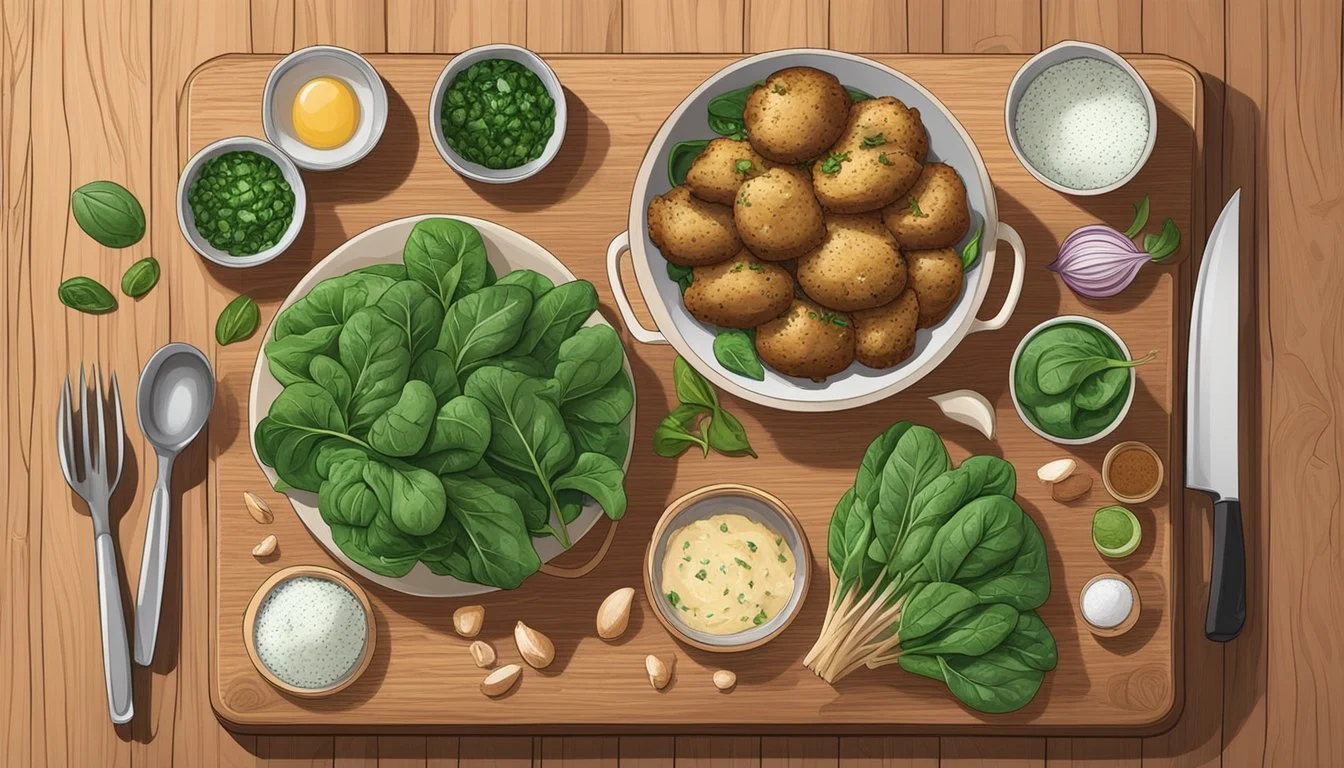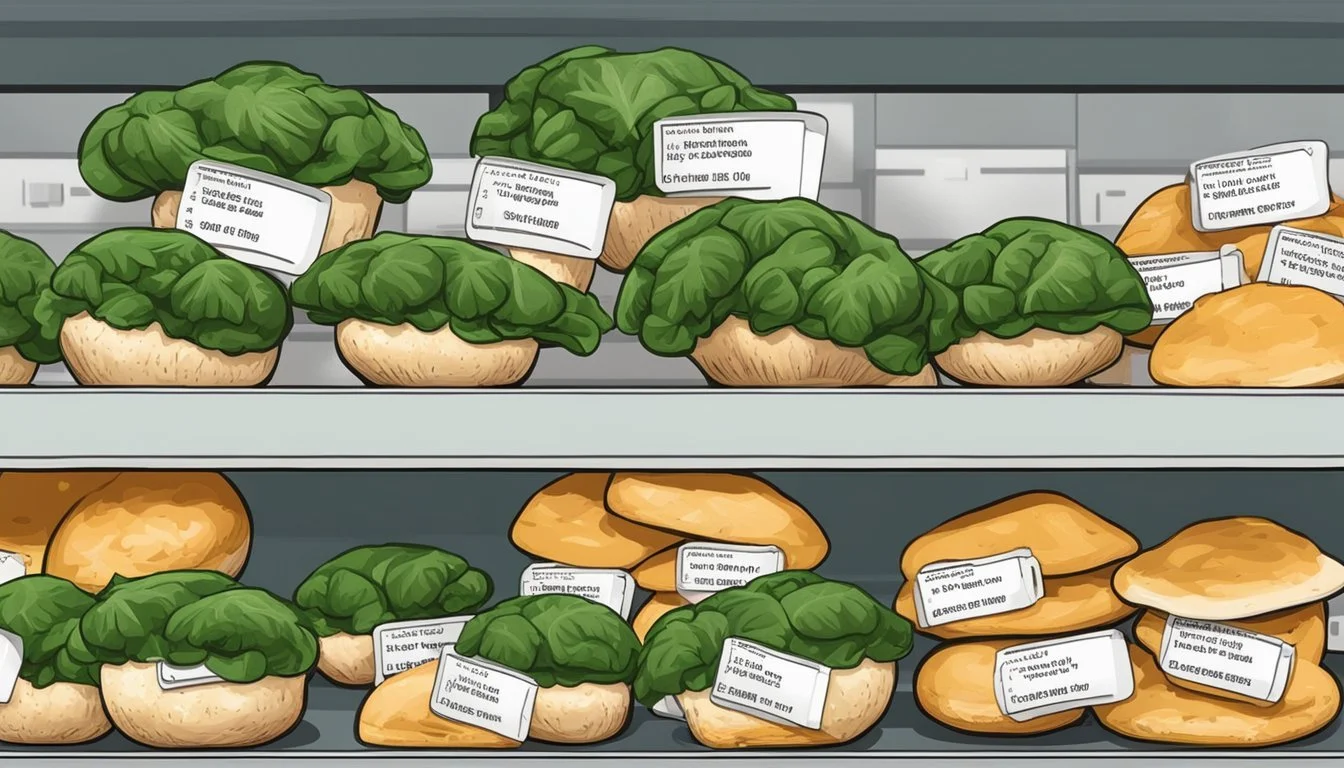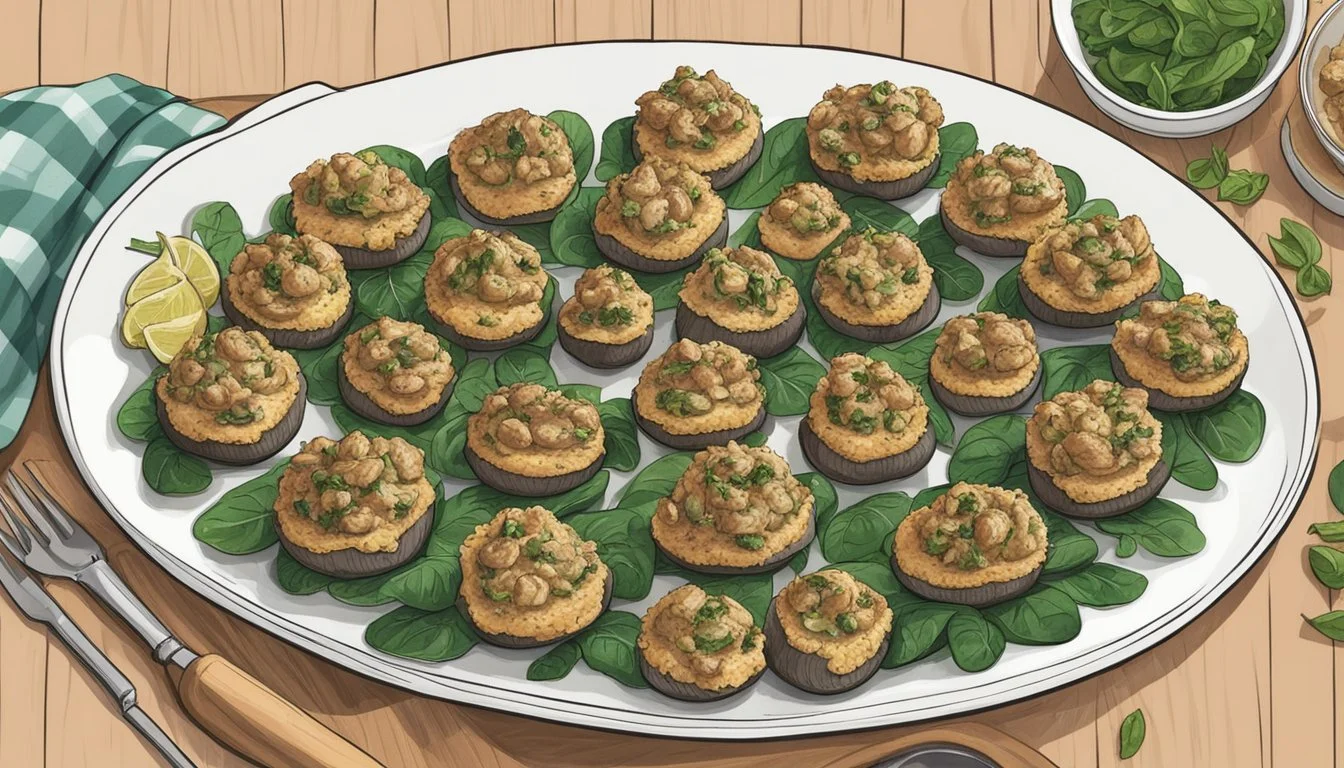How Long Do Chicken and Spinach Stuffed Mushrooms Last?
Storage Tips and Shelf Life Explained
One of the common concerns with homemade recipes is understanding their shelf life. Knowing how long chicken and spinach stuffed mushrooms last is crucial for food safety and planning your meals efficiently. Chicken and spinach stuffed mushrooms can generally last in the refrigerator for up to 3 to 4 days when stored properly in an airtight container.
The combination of poultry and fresh vegetables like spinach adds to the risk of spoilage if not handled correctly. It's also essential to ensure that the dish is stored at the right temperature to prevent bacterial growth. Depending on various factors such as preparation methods and storage conditions, these delicious stuffed mushrooms can be enjoyed for a few days without compromising their quality.
Preparing the stuffed mushrooms with care and attention to proper storage practices can significantly extend their freshness. This makes them an excellent option for meal prep, ensuring you have a tasty and nutritious meal ready to go within a few days of preparation.
Understanding Stuffed Mushrooms
Stuffed mushrooms, especially those combined with spinach and chicken breast, can offer a flavorful and nutritious dish. Selecting high-quality ingredients is crucial to ensure not only the best taste but also the safety and longevity of the dish.
Benefits of Choosing the Right Ingredients
Using fresh mushrooms and spinach ensures that the flavors and nutritional benefits are at their peak. Fresh spinach provides essential vitamins, while fresh mushrooms add a unique earthy flavor and important nutrients like B vitamins and selenium.
For stuffed chicken, selecting adequately seasoned and properly cut chicken breast ensures an even and thorough cooking process. It helps to avoid undercooked areas which could compromise food safety.
Combining these fresh ingredients with complementary flavors like garlic, salt, and pepper enhances the overall taste of the dish. Quality cheeses used in stuffing add creaminess and can improve the texture and richness of the final product.
Investing in top-notch ingredients not only elevates the dish but also supports a longer, safer shelf life when stored properly under refrigeration.
Preparation Techniques
In this preparation guide, key techniques such as stuffing chicken and spinach into mushroom caps, proper baking instructions, and achieving the perfect baking temperature are explored.
Stuffing and Assembling
Begin with selecting fresh mushrooms, preferably large button mushrooms, as they are ideal for stuffing. Remove the stems and set them aside for the stuffing mixture.
In a medium bowl, mix together the chopped mushroom stems, minced garlic, finely chopped spinach, grated mozzarella, and a small amount of olive oil. Add salt and black pepper to taste.
Carefully stuff each mushroom cap with the chicken and spinach mixture, ensuring it is tightly packed. If necessary, use a toothpick to hold the stuffing in place.
Baking Instructions
Preheat the oven to 375°F (190°C) for optimal baking results. Line a baking sheet with parchment paper to prevent sticking. Place the stuffed mushrooms on the baking sheet, spacing them evenly.
Bake in the preheated oven for approximately 20-25 minutes. The mushrooms should become tender, and the cheese should melt and turn golden brown.
Check for doneness by ensuring that the mushrooms are cooked through and the stuffing is hot. Remove the mushrooms from the oven and let them cool for a few minutes before serving.
Optimal Baking Temperature
Maintaining the correct temperature is critical for the perfect preparation of stuffed mushrooms. Bake at 375°F (190°C) to ensure even cooking.
Using a meat thermometer, the internal temperature of the stuffed mushrooms should be close to 165°F when fully cooked. This internal temperature indicates a safe and enjoyable dish.
Adjust the oven temperature slightly if the mushrooms appear undercooked or overcooked. Consistent temperature control leads to the best texture and flavor.
Shelf Life Determinants
The shelf life of chicken and spinach stuffed mushrooms typically depends on factors like their preparation state and component ingredients. A clear understanding of how these elements interact is essential for ensuring safety and quality.
Raw vs Cooked Shelf Life
Raw stuffed mushrooms with chicken and spinach can last about 1-2 days in the refrigerator if stored properly. They should be kept in an airtight container to prevent moisture and bacterial growth. If planning to store for longer periods, freezing is a viable option, extending their life up to 1 month without significant quality loss.
Cooked stuffed mushrooms can be refrigerated for 3-5 days. To maximize freshness, store them in a sealed container. Freezing cooked mushrooms is also an option and can further extend shelf life up to 2-3 months. They should be reheated to an internal temperature of 165°F using a meat thermometer to ensure safety.
Ingredient Impact on Shelf Life
Juicy chicken, when cooked properly, plays a vital role in extending the shelf life. Chicken should be cooked to an internal temperature of 165°F. Pre-cooking and properly storing chicken also helps in retaining its quality.
Spinach stuffed chicken can be prone to moisture buildup, so it’s crucial to manage storage conditions to avoid spoilage.
Ingredients like mozzarella cheese and olive oil can improve the longevity and flavor profile. Cheese should be fresh, and olive oil should be stored in cool, dark places to prevent it from turning rancid.
Mushroom stuffed chicken breast tends to have a longer shelf life when the chicken is butterfly-cut and uniformly cooked. The uniformity ensures thorough cooking, which helps in reducing microbiological risks.
Storing stuffed mushrooms properly, considering ingredient characteristics, significantly affects their shelf life and overall quality.
Safety and Consumption
When preserving the freshness of chicken and spinach stuffed mushrooms, correct cooking and storage methods play crucial roles. Key focus areas include maintaining proper internal temperature and recognizing spoilage signs.
Internal Cooking Temperature
Cooking chicken and spinach stuffed mushrooms to the right internal temperature is critical for ensuring food safety. Chicken breasts should reach an internal temperature of 165 degrees Fahrenheit (74 degrees Celsius). This ensures that any harmful bacteria are destroyed, and yields a tender, juicy chicken breast. Using a food thermometer helps achieve this precision. Insert the thermometer into the thickest part of the chicken without touching the stuffing to get an accurate reading.
Signs of Spoilage
Proper storage extends the shelf life of chicken and spinach stuffed mushrooms. Refrigerate leftovers within two hours of cooking in an airtight container. They typically last 3 to 4 days in the fridge. Watch for spoilage signs such as an unpleasant odor, discoloration, or a slimy texture. If any of these signs are present, it's safest to discard the food to avoid potential illness.
Enhancing the Dining Experience
Crafting the perfect meal involves not just the main dish but also delightful accompaniments and a beautiful presentation. This guide offers specific tips to elevate chicken and spinach stuffed mushrooms.
Accompaniments and Side Dishes
Choosing the right side dishes can transform a meal. Rice pilaf or a creamy risotto are great choices that complement the savory flavors.
Steamed vegetables like broccoli, carrots, and green beans add color and nutrients. Lemon-infused green beans are especially refreshing.
A salad with mixed greens, cherry tomatoes, and a light vinaigrette can balance out the richness of the stuffed mushrooms. Adding a sprinkle of parmesan cheese or Italian seasoning can enhance the flavors further.
Presentation Tips
A well-presented dish can make the dining experience memorable. Arrange the stuffed mushrooms neatly on a platter. Garnish with lemon wedges and a light dusting of paprika for a splash of color.
Use melting cheese or parmesan cheese to add an additional layer of visual and flavor appeal. Place side dishes in complementary serving bowls and focus on contrasting colors to make the meal visually appealing.
Ensuring the plate isn't overcrowded and adding edible garnishes like fresh herbs can complete the presentation.
Recipe Variations and Tips
Experimenting with various fillings and making adjustments for dietary restrictions can transform the classic chicken and spinach stuffed mushrooms into a more personalized and enjoyable dish. Consider the following options:
Alternate Filling Options
For a twist on the classic recipe, try incorporating different types of mushrooms like cremini or button mushrooms. These mushrooms add a deeper, earthier flavor.
Adding bacon provides a smoky taste that's hard to resist. Simply cook the bacon until crisp and crumble it into the filling.
Thyme and parsley offer aromatic herbs that complement the flavors well.
Including red onion can add a slight sweetness and an extra crunch. Additionally, a variety of grated cheeses such as mozzarella, cheddar, or parmesan can create a rich and creamy texture.
Adjustments for Dietary Restrictions
For those needing low-carb options, substitute cream cheese with a dairy-free or reduced-fat alternative when mixing with spinach. Opt for baby spinach for a milder flavor.
To cater to gluten-free diets, ensure all seasonings and additional ingredients like bacon are certified gluten-free. Avoid processed foods that may contain hidden gluten.
For vegans, replace chicken with marinated tofu, which can be seasoned to mimic the flavor of chicken, and use vegan cheese alternatives. Buckwheat or quinoa can add substance to the filling.
Incorporate really fresh herbs and spices rather than store-bought mixes to avoid unnecessary additives and preservatives. Use minimal oil such as olive oil to keep it light and healthy.
Handling Leftovers
Proper storage and reheating techniques can extend the lifespan and maintain the quality of chicken and spinach stuffed mushrooms. Following these methods ensures your leftovers remain safe to eat and delicious.
Storing Leftovers
It's crucial to store your leftovers properly to keep them fresh. Place the chicken and spinach stuffed mushrooms in an airtight container or wrap them tightly with aluminum foil or plastic wrap. Store them in the refrigerator at 40°F (4°C) or lower.
For best quality, consume within 3-4 days.
If you want to store them longer, freezing is an option. Before freezing, ensure the chicken and mushrooms are cooled completely.
Place the stuffed mushrooms on a baking sheet in a single layer and freeze until solid. Transfer them to a freezer-safe bag or container. They can be stored in the freezer for up to 3 months.
Reheating for Best Quality
Reheating properly is key to maintaining the flavor and texture. For oven reheating, preheat your oven to 350°F (175°C). Place the stuffed mushrooms in an oven-safe dish, cover with foil to prevent drying out, and heat for 20-25 minutes until warmed through.
Microwave reheating is faster but can affect texture. Place the leftovers on a microwave-safe plate, cover with a damp paper towel, and heat on medium power in 30-second intervals until hot.
For additional flavor, sprinkle some dried thyme or parmesan before reheating. This enhances the dish without overpowering the original taste.
Remember to avoid reheating multiple times to reduce the risk of foodborne illness.









